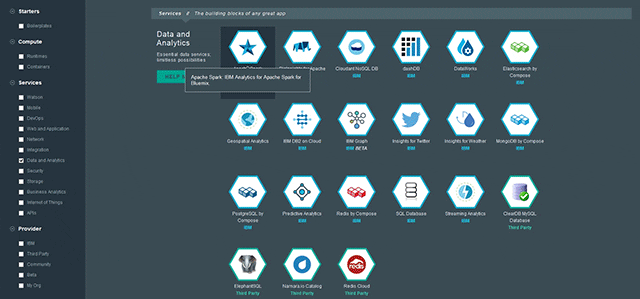Last updated on September 10th, 2021 at 04:52 am
Apache Spark is a well-known name in the machine learning and developer worlds. For those who are unfamiliar, it is a data processing platform with the capacity to process massive datasets. It can do so on one computer or across a network of systems and computing tools. Apache Spark also offers an intuitive API that reduces the amount of repetitive computing and processing work that developers would otherwise have to do manually.
Today, Apache Spark is one of the key data processing and computing software in the market. It’s user-friendly and it can also be used through whatever programming language you’re most comfortable with including Python, Java and R. Spark is open-source and truly intuitive in that is can be deployed for SQL, data streaming, machine learning and processing graphs. Displaying core knowledge of Apache Spark will earn you brownie points at any job interview.
To gain a headstart even before you begin full-fledged work in Apache Spark, here are some tutorials for beginners to sign up for.
- Taming Big Data with Apache Spark and Python (Udemy)
This best-selling course on Udemy has fast become a go-to for those looking to dive into Apache Spark. More than 47,000 students have enrolled to learn how to:
- Understand Spark Streaming
- Use RDD (Resilient Distributed Datasets) to process massive datasets across computers
- Apply Spark SQL on structured data
- Understand the GraphX library
Big data science and analysis is a hot skill these days and will continue to be in the coming future. The course gives you access to 15 practical examples of how Apache Spark was used by industry titans to solve organisation-level problems. It uses the Python programming language. However, those who wish to learn with Scala instead can choose a similar course from the same provider.
- Machine Learning with Apache Spark (Learn Apache Spark)
This multi-module course is tailored towards those with budget constraints or those who are unwilling to invest too much time, preferring instead to experiment. The modules are bite-sized and priced individually to benefit those just dipping their toes. The platform’s module on “Intro to Apache Spark” is currently free for those who want to get started. Students can then progress to any other module which catches their fancy or do it all in the order prescribed. Some topics you can expect to explore are:
- Feature sets
- Classification
- Caching
- Dataframes
- Cluster architecture
- Computing frameworks
- Spark Fundamentals (cognitiveclass.ai)
This Apache Spark tutorial is led by data scientists from IBM, is four hours long and is free to register for. The advantage of this course is that it has a distinctly IBM-oriented perspective which is great for those wishing to build a career in that company. You will also be exposed to IBM’s own services, including Watson Studio, such that you’re able to use both Spark and IBM’s platform with confidence. The self-paced course can be taken at any time and can also be audited multiple times. Some prerequisites to be able to take this course are an understanding of Big Data and Apache Hadoop as well as core knowledge of Linux operating systems.
The five modules that constitute the course cover, among other topics, the following:
- The fundamentals of Apache Spark
- Developing application architecture
- RDD
- Watson Studio
- Initializing Spark through various programming languages
- Using Spark libraries
- Monitoring Spark with metrics
Conclusion
Apache Spark is leveraged by multi-national million-dollar corporations as well as small businesses and fresh startups. This is a testament to how user-friendly and flexible the framework is.
If you wish to enrol in a Machine Learning Course instead of short and snappy tutorials, many of them also offer an introduction to Apache Spark. Either way, adding Apache Spark to your resume is a definite step up!

